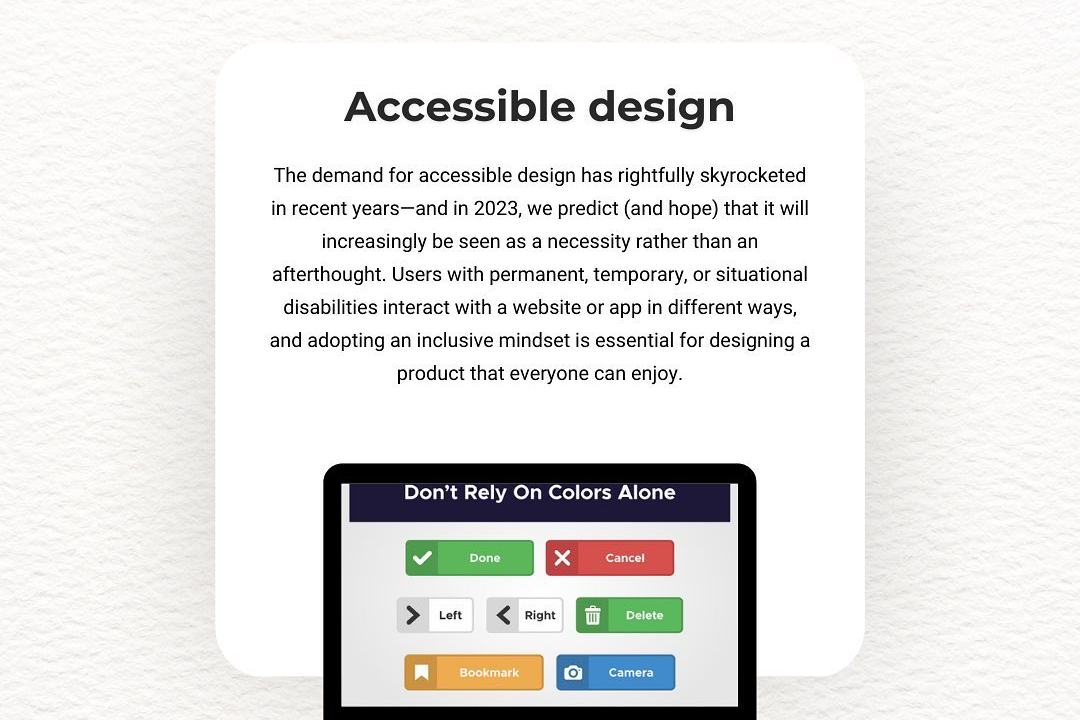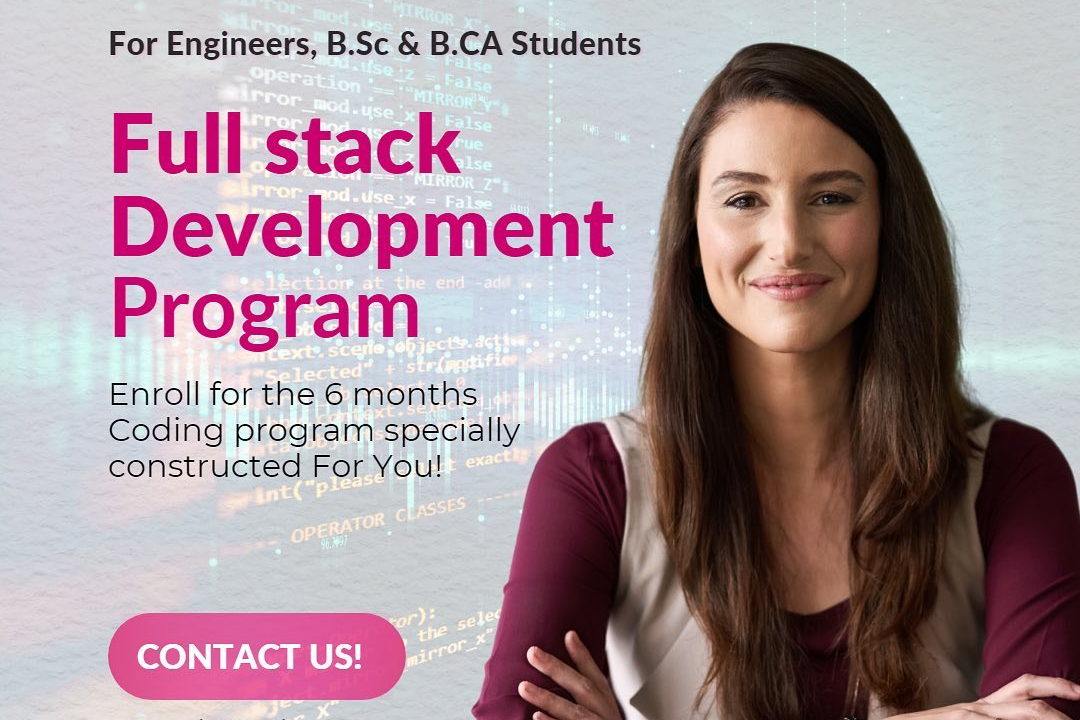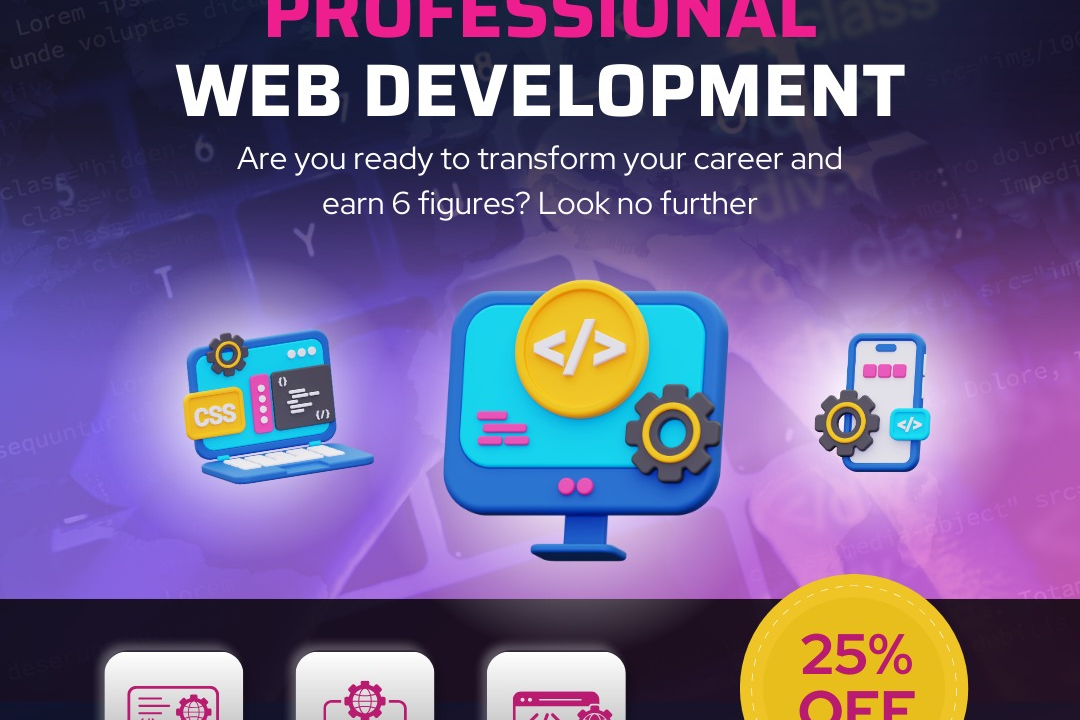Laravel Interview Questions Advanced
Mastering Laravel: Advanced Interview Questions for Pros
Laravel Interview Questions Advanced
Advanced Laravel interview questions are essential for assessing a candidate's deep understanding of the framework and their ability to tackle complex challenges in real-world applications. These questions often explore intricate subjects such as service providers, dependency injection, middleware, and event broadcasting, which are crucial for developing scalable and maintainable applications. By delving into advanced topics, interviewers can evaluate a developer's proficiency in leveraging Laravel's powerful features, ensuring they can implement best practices and optimize performance. This knowledge is invaluable for organizations seeking to build robust applications that effectively meet user needs and business goals.
To Download Our Brochure: https://www.justacademy.co/download-brochure-for-free
Message us for more information: +91 9987184296
1 - What is Dependency Injection in Laravel?
Dependency Injection is a design pattern used to implement IoC (Inversion of Control), allowing you to inject dependencies into classes instead of hard coding them. Laravel provides an easy way to manage dependencies, allowing classes to define their dependencies in the constructor, which the service container resolves automatically.
2) Explain Service Providers in Laravel.
Service providers in Laravel are the central place to configure application services. Every Laravel application has at least one service provider, which is typically located in the `App\Providers` directory. They are responsible for binding services to the service container, registering event listeners, and performing other bootstrapping tasks.
3) What are Middleware in Laravel?
Middleware is a mechanism for filtering HTTP requests entering your application. Laravel allows you to define middleware that can inspect or modify incoming requests and outgoing responses. You can register middleware globally or assign it to specific routes.
4) How does Laravel handle Events?
Laravel's event system allows you to create and listen to events, providing a simple observer implementation. You can define events as classes and dispatch them throughout your application. Listeners can then respond to these events, which promotes a decoupled design.
5) What is Eloquent ORM, and how does it work?
Eloquent is Laravel's built in ORM (Object Relational Mapping) that simplifies database interactions. It allows developers to use an expressive syntax to define database models and relationships. Eloquent automatically handles CRUD operations and relationships, making it easy to work with databases.
6) Explain the purpose of the `config` directory in Laravel.
The `config` directory holds all configuration files for your Laravel application. Each file corresponds to a specific feature or package, allowing you to centralize configuration options. You can use environment variables to change settings without modifying code directly.
7) What is the difference between `hasMany` and `belongsTo` relationships in Eloquent?
`hasMany` indicates a one to many relationship where one model owns multiple instances of another model, while `belongsTo` signifies that a model belongs to a single instance of another model. For example, a User can have many Posts (hasMany), while a Post belongs to a User (belongsTo).
8) How can you implement Rate Limiting in Laravel?
Rate limiting can be implemented using Laravel's built in middleware called `throttle`. You can apply this middleware to routes or controllers to limit the number of requests a user can make in a given timeframe, enhancing the application's security and performance.
9) What is Laravel Passport?
Laravel Passport is a package that provides OAuth2 server implementation for API authentication. It allows developers to issue access tokens to users and manage user authentication via stateless API calls, making it suitable for building secure APIs.
10) Explain CORS in the context of Laravel.
CORS (Cross Origin Resource Sharing) is a security feature implemented by web browsers preventing requests from different domains. Laravel provides support for CORS through middleware, allowing you to configure which origins, methods, and headers are allowed, ensuring your APIs can be accessed from various origins safely.
11 - How do you handle database migrations in Laravel?
Database migrations in Laravel are version controlled scripts that allow you to modify the database schema over time. You can create and run migrations using Artisan commands, making it easy to manage your database structure and share changes with other developers.
12) What is the purpose of the .env file in Laravel?
The `.env` file in Laravel is used to manage application environment variables. It allows you to store configuration values like database credentials, API keys, and application settings outside your codebase, making it easier to maintain different environments (development, production).
13) How do you perform validation in Laravel?
Validation in Laravel can be performed using the built in `Validator` class or through form request validation. You can define validation rules for incoming requests and customize error messages, ensuring that data provided by users is accurate and meets specified criteria.
14) What are Form Requests in Laravel?
Form requests are custom request classes that encapsulate validation logic. They allow you to separate validation from your controllers, making your code cleaner and more manageable. You can create a form request using Artisan and define your validation rules within the class.
15) How can you implement job queues in Laravel?
Job queues in Laravel can be implemented using the `Queue` system that allows you to defer the processing of a time consuming task. You can define jobs as classes, pushing them onto a queue for background processing. This helps improve the application's response time and user experience by handling tasks asynchronously.
16) What is the purpose of the `routes/web.php` and `routes/api.php` files in Laravel?
The `routes/web.php` file is used for defining routes that handle web requests and typically return HTML responses. In contrast, the `routes/api.php` file is designated for API routes, which return JSON responses and are usually stateless. This separation helps manage web and API routes more effectively.
17) Explain the concept of route model binding in Laravel.
Route model binding allows you to automatically inject model instances into your routes based on the route parameters. For instance, you can specify a model in the route declaration; Laravel will automatically fetch the corresponding database record, simplifying the process of accessing route related data.
18) What are Laravel Mix and its purpose?
Laravel Mix is a build tool that simplifies the process of compiling and minifying assets like CSS and JavaScript. With an expressive API, it integrates seamlessly with Webpack, making it easy for developers to manage assets using simple method chaining rather than complex Webpack configurations.
19) How do you handle file uploads in Laravel?
File uploads in Laravel can be handled using the `Storage` facade, which provides a simple API for managing files. You can use the `request() >file('input_name')` method to access uploaded files and store them in a specified disk, either locally or in the cloud (e.g., Amazon S3).
20) What are Events and Listeners in Laravel?
Events in Laravel provide a way to broadcast and listen for specific actions within your application. Listeners are classes that respond to those events, allowing you to decouple business logic from the event triggering process. This design pattern improves code organization and maintainability.
21 - How do you implement localization in Laravel?
Localization in Laravel can be achieved using language files stored in the `resources/lang` directory. You can define translation strings for different languages, allowing your application to support multiple locales, making it accessible to a wider audience.
22) What is the purpose of the `app/Http/Controllers` directory?
The `app/Http/Controllers` directory is where you define controller classes that handle incoming HTTP requests. Controllers contain the logic for processing requests and returning responses, segregating the application's business logic from the routing.
23) Explain the difference between `GET` and `POST` requests.
`GET` requests are used to retrieve data from a server and do not alter the state of the server. They are generally idempotent and can be cached. Conversely, `POST` requests are used to send data to the server to create or update resources and are not idempotent, meaning they can change the state with each request.
24) How does Laravel handle error handling and logging?
Laravel provides a unified error handling approach using the `App\Exceptions\Handler` class. By default, it uses the Monolog library for logging and allows you to customize error messages. You can configure logging channels in the `config/logging.php` file, enabling different log levels and formats.
25) What is Blade templating in Laravel?
Blade is Laravel's built in templating engine that provides a simple and powerful way to create dynamic HTML layouts. It allows developers to use control structures (e.g., loops and conditionals) directly within the templates, facilitating the construction of complex views with ease.
26) How do you implement authentication in Laravel?
Authentication in Laravel can be implemented using Laravel's built in authentication scaffolding, which can be set up using Artisan commands. It provides features like login, registration, password reset, and user management, helping developers secure their applications with ease.
27) What is the role of migration seeds in Laravel?
Migration seeds are used to populate the database with initial data. Laravel provides a `DatabaseSeeder` class where you can define data generation logic, making it easy to create data for development and testing. Seeds can be run using the Artisan command `db:seed`.
28) Explain the concept of a Service Container in Laravel.
The Service Container is a powerful tool for managing class dependencies and performing dependency injection in Laravel. It allows developers to register services, resolve them when needed, and manage their lifecycle, enabling clearer and more maintainable code.
29) What is RESTful API, and how does Laravel support it?
RESTful APIs adhere to REST (Representational State Transfer) principles, allowing stateless communication between clients and servers. Laravel supports the creation of RESTful APIs through resources, route definitions, and resource controllers, simplifying the implementation of CRUD operations using HTTP methods.
30) How can you use Laravel's built in testing features?
Laravel provides a comprehensive set of testing tools that integrate with PHPUnit, enabling developers to write unit and feature tests. You can use the `php artisan make:test` command to generate test cases and utilize helper methods to simulate HTTP requests, assert responses, and test your application's behavior.
31 - What are custom validation rules in Laravel?
Custom validation rules allow you to define your own validation logic that can be reused across your application. By creating a new rule class using the Artisan command `make:rule`, you can implement complex validation scenarios that may not be covered by the built in rules.
32) How do you manage sessions in Laravel?
Session management in Laravel can be done through the `session` helper or the `Session` facade. Laravel supports various session drivers (e.g., file, database, Redis), allowing developers to choose how session data is stored. Middleware can be used to maintain session state as users navigate through the application.
33) What is the purpose of the `storage` directory in Laravel?
The `storage` directory is used to store application generated files, such as logs, caches, session data, and file uploads. Within this directory, you can find subdirectories for organizing different types of content, keeping the app organized and maintaining file persistence outside the public directory.
34) Explain the concept of middleware groups in Laravel.
Middleware groups allow you to group multiple middleware under a single name, allowing you to apply several middleware to a route or a group of routes effortlessly. For example, Laravel defines a `web` middleware group that includes session, CSRF protection, and more, allowing you to bundle related middleware logically.
35) What are the benefits of using Laravel's features for RESTful API development?
Laravel offers built in support for RESTful routing, resource controllers, and API resources, making it easy to create structured and maintainable APIs. Features like middleware, authentication, and validation can be seamlessly applied, enhancing the security and reliability of APIs, ultimately improving development efficiency.
Course Overview
The “Laravel Interview Questions Advanced” course offers an in-depth exploration of complex topics and best practices in Laravel development, specifically tailored for individuals preparing for advanced technical interviews. Participants will delve into challenging concepts such as dependency injection, service containers, middleware, RESTful API design, and custom validation rules, equipping them with the knowledge required to tackle real-world problems and articulate technical expertise confidently. Through hands-on projects and practical examples, this course aims to enhance both understanding and application of advanced Laravel features, ensuring that candidates are well-prepared to impress interviewers in competitive job markets.
Course Description
The “Laravel Interview Questions Advanced” course is designed for developers looking to excel in their Laravel knowledge and interview readiness. This comprehensive program covers a range of complex topics such as dependency injection, service containers, middleware, and RESTful API design. Participants will engage in real-time projects that not only solidify their understanding of advanced concepts but also prepare them for challenging technical interviews. By focusing on practical applications and best practices, this course equips learners with the confidence and skills needed to tackle high-level Laravel questions and demonstrate their expertise to potential employers.
Key Features
1 - Comprehensive Tool Coverage: Provides hands-on training with a range of industry-standard testing tools, including Selenium, JIRA, LoadRunner, and TestRail.
2) Practical Exercises: Features real-world exercises and case studies to apply tools in various testing scenarios.
3) Interactive Learning: Includes interactive sessions with industry experts for personalized feedback and guidance.
4) Detailed Tutorials: Offers extensive tutorials and documentation on tool functionalities and best practices.
5) Advanced Techniques: Covers both fundamental and advanced techniques for using testing tools effectively.
6) Data Visualization: Integrates tools for visualizing test metrics and results, enhancing data interpretation and decision-making.
7) Tool Integration: Teaches how to integrate testing tools into the software development lifecycle for streamlined workflows.
8) Project-Based Learning: Focuses on project-based learning to build practical skills and create a portfolio of completed tasks.
9) Career Support: Provides resources and support for applying learned skills to real-world job scenarios, including resume building and interview preparation.
10) Up-to-Date Content: Ensures that course materials reflect the latest industry standards and tool updates.
Benefits of taking our course
Functional Tools
1 - Laravel Framework: The course heavily utilizes the Laravel framework itself, which is renowned for its elegant syntax and robust features. Laravel provides tools for routing, authentication, sessions, caching, and much more, allowing students to build complex applications with ease. Understanding Laravel's core functionality is crucial, as it forms the foundation for answering advanced interview questions. Students will engage with its ecosystem, including Laravel Mix for asset compilation and Eloquent ORM for database interactions.
2) MySQL Database Management: Since most applications rely on data storage and management, a deep understanding of MySQL is essential. Students will learn how to perform CRUD operations, build complex queries, and design efficient database schemas. The course emphasizes database migrations and seeding, which are critical skills for managing database changes effectively during development. Additionally, knowledge of relationships and indexing techniques will enhance students' database management capabilities.
3) Git and GitHub: Version control is a vital skill in software development. The course teaches students to use Git for tracking code changes and collaboration, allowing them to version control their projects effectively. GitHub serves as an online repository where students can host their Laravel projects, interact with other developers, and manage their code. Familiarity with branching, merging, and pull requests will be covered, equipping students with skills needed for collaborative environments.
4) Postman: Testing APIs is an integral part of web development, especially with Laravel's RESTful services. Postman is a powerful tool that students will use to test and develop API endpoints. They will learn how to send requests, handle responses, and manage collections, which are essential for understanding how front end applications interact with the back end. This hands on experience is crucial for handling real world scenarios in interviews.
5) Docker: The course introduces students to Docker for creating containerized applications, which streamline the development environment. Understanding Docker enables students to deploy applications in a consistent manner across different environments. This knowledge is increasingly important in job markets where DevOps practices are prevalent. They will learn to build, run, and manage containers, significantly improving their deployment and scalability skills.
6) Laravel Homestead: Laravel Homestead provides a development environment tailored for Laravel applications. It simplifies the setup process for students by creating a virtual machine complete with all necessary tools. In this course, students will learn to configure and utilize Homestead, allowing them to focus on coding rather than environment setup issues. This experience is beneficial as it reflects real world development environments where setup efficiency is critical.
7) RESTful API Development: In this course, students will dive deep into building RESTful APIs using Laravel. They will learn to structure their APIs, apply proper routing, and implement authentication and authorization mechanisms, such as JWT or OAuth. Understanding the principles of REST will prepare students to design scalable and efficient API services, a vital skill sought by employers.
8) Unit and Feature Testing: Quality assurance is a critical aspect of any application development lifecycle. The course covers Laravel's built in testing tools, teaching students how to write unit tests and feature tests to ensure that their applications function correctly. By embracing TDD (Test Driven Development) principles, students will learn to catch bugs early and maintain high quality code, which is an appealing trait in job candidates.
9) Middleware and Service Providers: Laravel’s middleware and service providers are essential for managing application requests and enhancing application functionality. Students will learn how to create custom middleware for tasks like authentication and logging, as well as utilize existing middleware to streamline application usage. This knowledge plays a key role in optimizing performance and security.
10) Blade Templating Engine: Laravel’s Blade templating engine simplifies view creation by allowing developers to write clean and reusable code. The course will teach students how to leverage Blade to manage views efficiently, implement conditional statements, and create layouts. Understanding this feature enhances students' front end capabilities within the Laravel ecosystem, preparing them for full stack development roles.
11 - Event Broadcasting: In modern web applications, real time features are increasingly important. The course introduces event broadcasting in Laravel, demonstrating how to implement web sockets for real time notifications and interactions. Students will learn the necessary JavaScript frameworks, like Laravel Echo, to handle broadcasting and listen for events, making them more appealing to companies looking to build interactive applications.
12) Caching Strategies: Performance optimization is crucial for web applications. The course teaches students about caching strategies using Laravel’s built in cache mechanisms. They will learn how to implement caching for routes, database queries, and views to significantly enhance application speed and performance. Knowledge of caching will prepare students for discussions on optimizing applications during interviews.
13) Deployment Strategies: Understanding how to deploy Laravel applications is essential for real world success. The course will cover various deployment strategies, including using shared hosting, VPS, and cloud services like AWS or DigitalOcean. Students will learn how to automate deployments with tools like Envoyer or CI/CD pipelines, giving them a competitive edge in the job market.
14) Security Best Practices: Web security is a top priority for developers. The course emphasizes implementing security best practices in Laravel applications, such as input validation, CSRF protection, and securing database interactions to prevent SQL injections. Students will understand how to safeguard applications and user data, making them highly valuable in a security centric job landscape.
15) Integrating Front End Technologies: To build comprehensive web applications, knowledge of front end frameworks is beneficial. The course introduces students to integrating Laravel with front end technologies like Vue.js or React, allowing them to create dynamic single page applications (SPAs). This combination prepares students for a wide range of job opportunities that require full stack development skills.
Through these extensive and practical learning opportunities, JustAcademy equips students with the comprehensive skill set required to excel in the job market, enhancing their employability after certification.
Browse our course links : https://www.justacademy.co/all-courses
To Join our FREE DEMO Session:
This information is sourced from JustAcademy
Contact Info:
Roshan Chaturvedi
Message us on Whatsapp: +91 9987184296
Email id: info@justacademy.co
App Architecture
Building A Developer Portfolio
Deloitte Interview Questions Ios
Interview Questions For Ios Swift











